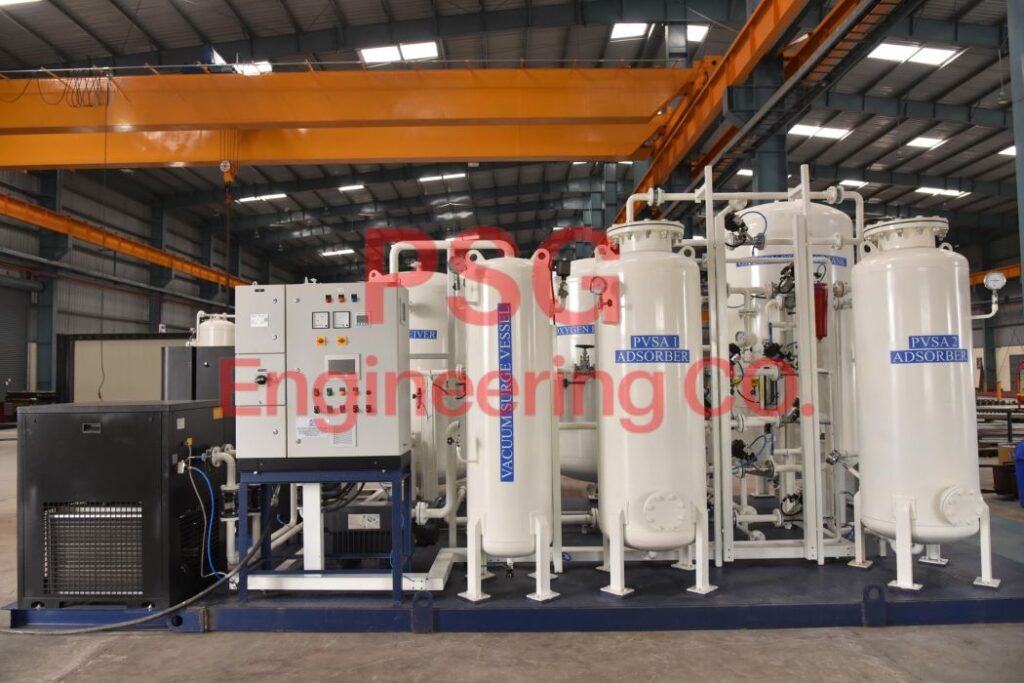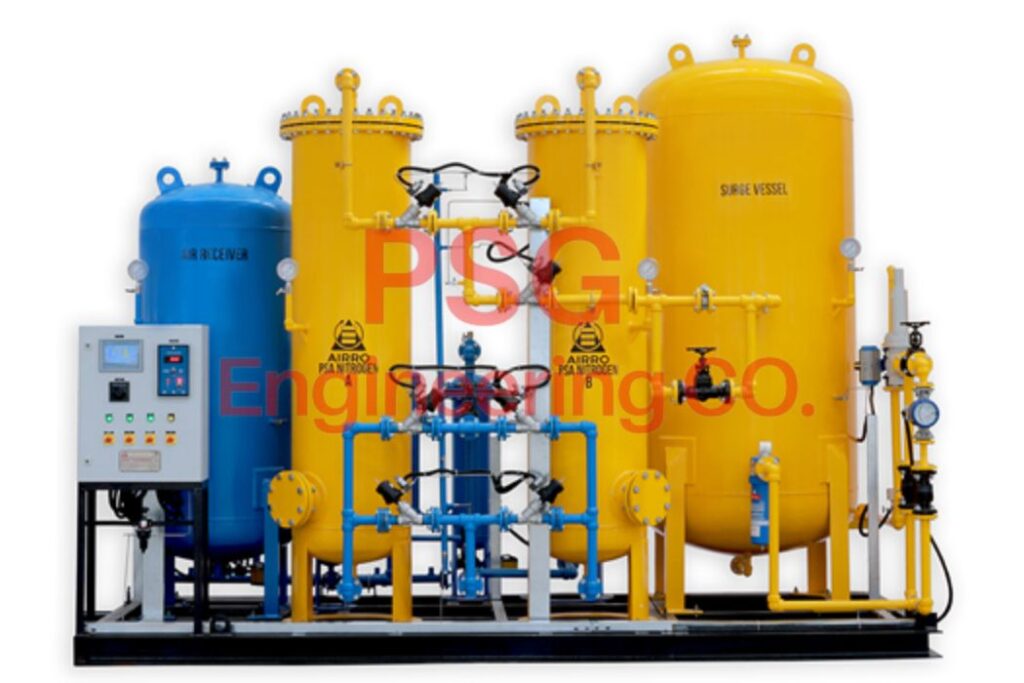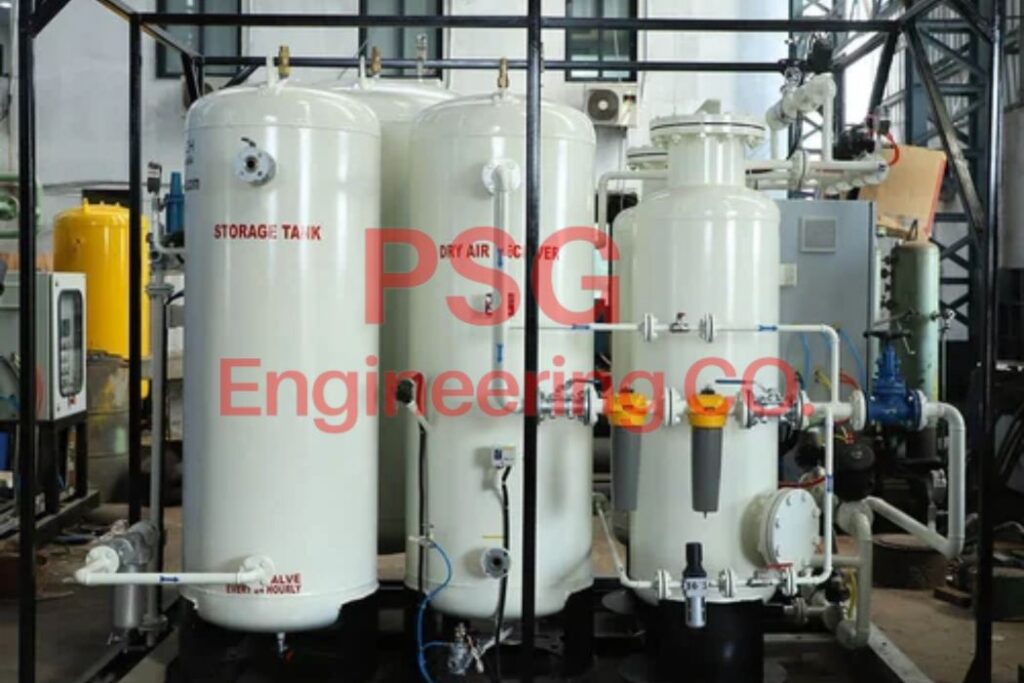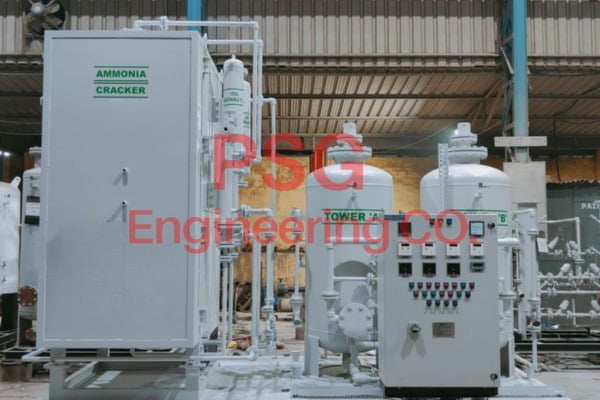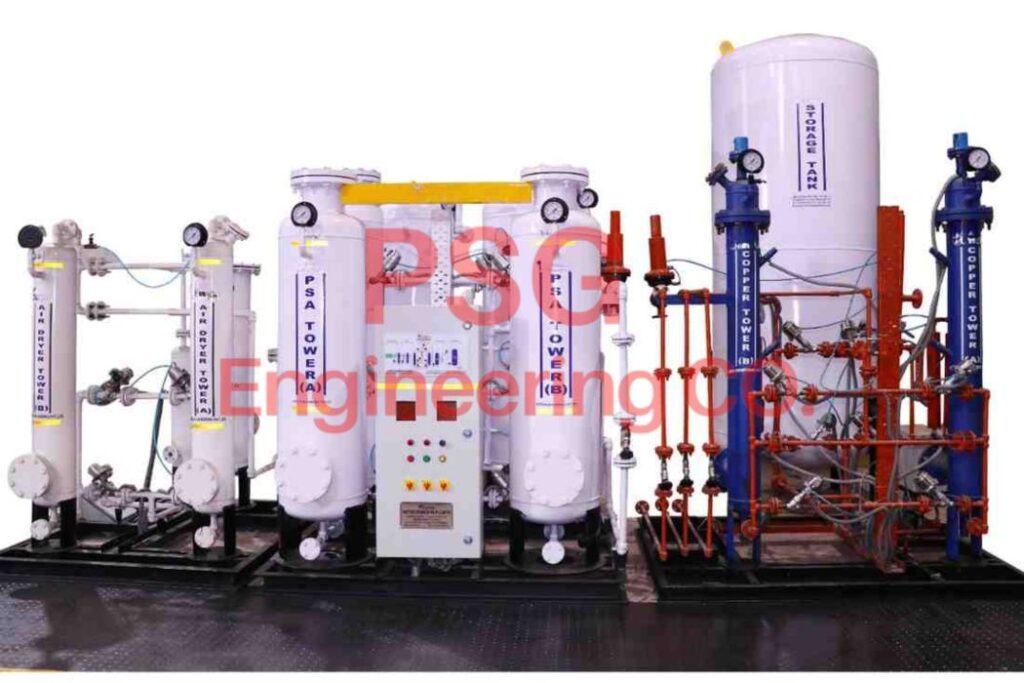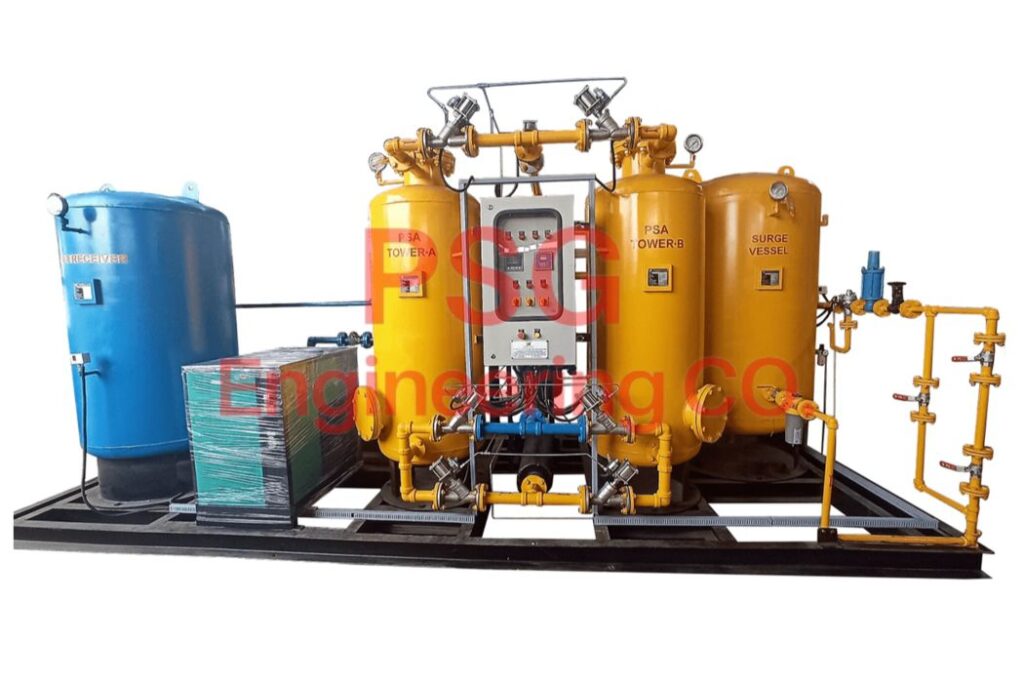- 493, Devlok Colony, Swarg Ashram Road, Hapur - 245101, Uttar Pradesh, India
- psgengineeringco@gmail.com
- +91-8126173604
Semi Automatic PSA Hydrogen gas Plant
Semi Automatic PSA Hydrogen Gas Plant Manufacturer, Exporter in India
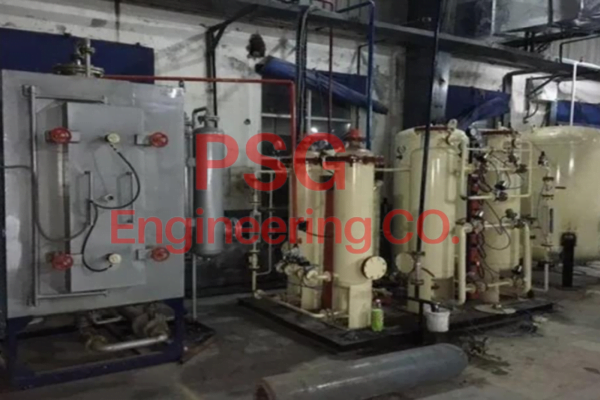
Salient Features:
- Low Capital cost
- Virtually maintenance free
- Low running cost
- Available in capacities
Technical Specifications:
- Capacity: 1Nm3/hr to 200Nm3/hr
- Purity: 100 PPM TO 1-PPM un-cracked Ammonia
- Pressure: Up to0.5- 6 Bar without Booster compressor
- Dew Point: up to (-) 80°C
- 2NH3 = 3H2 + N2
Our Products
Catalytic decomposition:
Ammonia is fed into the cracker unit and heated at high temperatures (usually around 850-950°C) in the presence of a suitable catalyst (often nickel-based). This process breaks down ammonia into its component gases:
Hydrogen (H2): The most sought-after product in this process.
Nitrogen (N2): The other main product formed during decomposition.
Separation and Purification:
After decomposition, the mixture of hydrogen and nitrogen gases is separated. This separation is usually achieved through processes such as pressure swing adsorption (PSA) or membrane separation.
PSA Technology: PSA is commonly used to purify and separate hydrogen gas from nitrogen and other gases. It works on the principle of selective adsorption of gases on an adsorbent material under pressure.
Hydrogen Gas Production:
The pure hydrogen gas obtained from a cracker plant is usually of high purity (often 99% or more). This high purity hydrogen is suitable for various industrial applications where clean and reliable hydrogen supply is required.
Applications of Hydrogen Gas from Ammonia Cracker Plant:
- Chemical Industry: Used as feedstock for various chemical processes including hydrogenation reactions.
- Metallurgical Processes: Used for hydrogenation and reduction processes in metal refining.
- Electronics: Used in the semiconductor industry and as a carrier gas in gas chromatography.
- Energy Applications: Used in fuel cells to generate electricity and in the hydrogenation of oils in the food industry.
Key Features of Sami Automated PSA Hydrogen Gas Plants:
- Automation: These plants are designed for automated operation, ensuring efficient and continuous production of hydrogen gas.
- PSA Technology: Uses Pressure Swing Adsorption technology for purification and separation of hydrogen from other gases.
- Capacity: Can vary from small-scale units to large industrial plants, depending on production requirements.
- Safety: Includes safety features for handling hydrogen gas, which is flammable and needs careful handling.
Environmental Considerations:
Energy Efficiency: Focuses on optimizing energy consumption during ammoniacracking and hydrogen purification processes.

